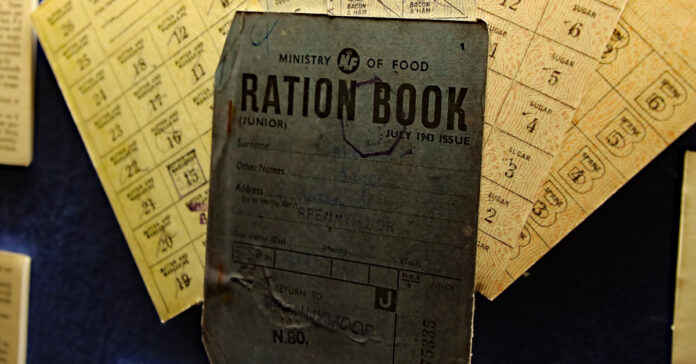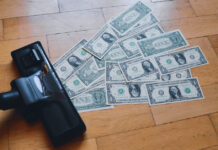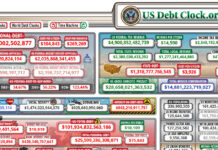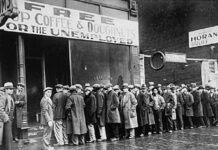
Shortages are one of the early signs of an impending financial collapse. If they grow from a shortage to an outright outage, then you know you are in the throes of a collapse. When you see purchasing limits, you know shortages are here, but when rationing starts (where the government allows you to buy only a certain amount per week or month), you will know we are in the proverbial “deep doodoo.”
Let me give you an example:
When there was a gasoline shortage, we had to go to multiple gas stations to find gas or might have to buy a different octane rating than they wanted. If there was no gas to be found, people would ask the station when they were expecting a truck. If they expected the truck within an hour or two, drivers would wait for it. In an outage, not only will there be no gas, there will be no hope of gas anytime soon. Before that happens, someone in authority will be give you an app with a QR code that allows you to buy 30 gallons of gas per month (or some other, artificial limit).
In a food shortage, you might not be able to find the food items you are used to. The brand, size and type you want to buy may be out of stock, but there will be alternatives. For example, during the COVID-19 shortage, we could not buy the Jif peanut butter we normally buy, so we picked up Skippy instead. In an outage, there would be no peanut butter, not even the store brand. When the government limits how many gallons of milk, loaves of bread, and pounds of rice you can buy every month, then you will know the collapse is here.
How to Handle Shortages
If you are experiencing a shortage, there are a couple things you can do that will help get you through the early stages.
First, be flexible and seek similar alternatives. Get something close enough that can replace the item you need. For example, buy canned chicken if there is no fresh chicken. Buy pork instead of beef.
Second, when an item you want comes into stock, buy more than you normally would. If the store limits the quantity, buy as much as they allow. (Yes, this contributes to the shortage, but if you don’t buy it, someone else will.)
Third, try to make, bake, or grow it yourself. If there is no bread in the store, buy flour and bake your own. If there is no bleach in the store, buy chlorine for a pool or spa and mix a replacement.
Fourth, trade something you have for what you need, even if you have to get it used. Maybe a friend or neighbor bought extra, but maybe they have what you need in their garage or attic.
Fifth, repair or reuse what you have. Obviously, this won’t work for things that get consumed, like coffee, but if your sheets or getting thin, just keep using them. If your pants get a tear, sew them back up. It may not be pretty, but it’s better than nothing.
Sixth, look for a gray market or black market source. If it is something you need, like a prescription medicine or gasoline, then your best bet may be to get it illegally.
What to do if Rationing Starts
Let’s imagine you are allowed to buy only 30 gallons of gas per month. “Ha!” you think. “I work at home, so I only use about 15 gallons a month.” In this situation, buy all 30 gallons and then trade the excess gas with someone who needs it or use it to pay for goods and services. I know I could trade gas for firewood, for example. Or, a neighbor with a generator that burns gasoline might allow you to run a long extension cord from it to your house in return for your extra gas.
While it would be hard to store gasoline, they might also ration things with a longer shelf life, like four and sugar. In that case, buy the maximum amount allowed. Not only can you add this extra quantity to your emergency stockpile, but you can use them as trade goods if you need something else.
Unless rationing has been caused by a natural or man-made disaster, such as a major volcanic eruption that covers a third of U.S. farmland in volcanic ash, consider it a sign that outages are next.
How to Handle an Outage
One way to survive an outage is to save your stockpile of goods until there are outright outages. Don’t use much of your stockpile during a shortage; you will need it more in an outage. Having a stockpile, stash, cache, or whatever you want to call it is an excellent idea, but at some point you may run out as well. In that case, you are probably limited to making do or doing without.
For instance, if the natural gas serving your home runs out, you will have to do without. Maybe you can cook and heat your house, or at least a room or two, by burning wood. If the gasoline is all gone, you could ride a bike or even a horse.
When you think about preppers, we are all about making do more than doing without. That’s why we prep in layers, so we have alternatives we can fall back on. That’s why we are encouraged to grow our own food, have our own tools and build our own skills. Because when the SHTF and there is no electricity, natural gas, gasoline, food, water or medical care, we have to provide our own or a reasonable substitute.
This is part one of our how to handle an economic collapse series. Don’t miss Part 2 on how to handle the loss of services, including police, fire and EMS.








The old ration book brings back memories. I was born in March 1945, the war almost over, but they still issued War Ration Stamps even to new born. Mother saved my partially used stamps for me to see. The book is now in the hands of my granddaughter who has taken it to History class.
Everyone needs to understand what the war did to our nation, except cost lives. People did without. Don’t imagine that people will readily accept such limits in these days
Comments are closed.